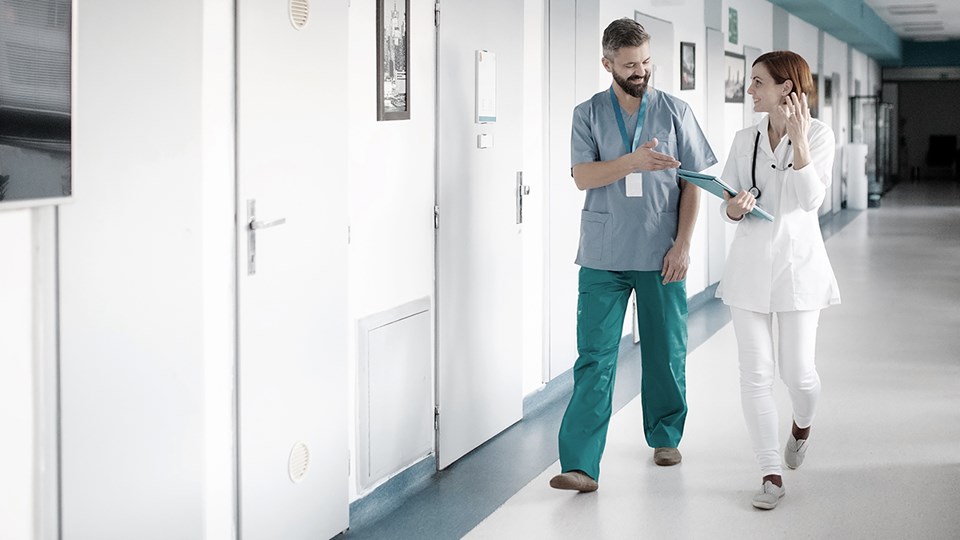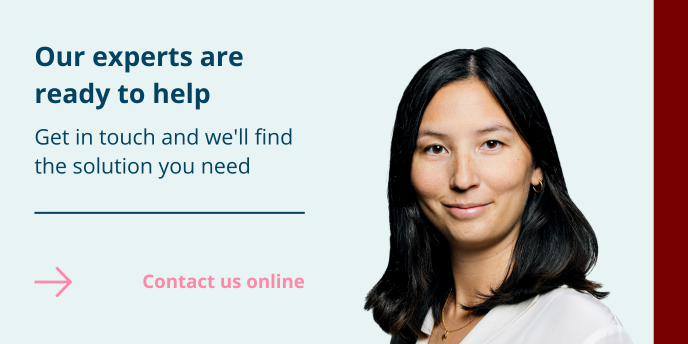With Torben Dalgaard, CEO, Centre for IT, Medical Technology and Telephony (CIMT), Danish Capital Region
There are a great number of benefits in implementing new technology into public sector workflows. But it does require a willingness to explore all the options – especially when the regulatory framework is not yet in place, according to Torben Dalgaard, CEO of the Capital Region of Denmark's almost 1,000-man Centre for It, Medical Technology and Telephony Services.
Implementation of new digital technologies is necessary for the public sector of the future to offer citizens the most efficient service levels while also making the best use of its resources.
This is a point highlighted by Torben Dalgaard, CEO of the Capital Region of Denmark's Centre for IT, Medical Technology and Telephony (CIMT), who is in charge of day-to-day operations as well as medical technology and IT support for the 45,000 employees in the Region's hospital and healthcare sector, who have responsibility for 1.8 million citizens.
Research projects testing boundaries
With almost 1,000 FTE staff, CIMT is the largest of a total of seven operational and development centers in the Region, and although a large part of the day-to-day business consists of operational support, Torben Dalgaard says there is still room for supporting the testing of new technologies. This can be done through development partnerships with private companies and in the form of research projects. Torben Dalgaard describes this as a good way to keep up development activities when the daily routine or the organization does not leave room for traditional development activities.
"In many ways, the Region is at the beginning of its digital transformation journey. But we do have a number of ongoing new research projects that are testing boundaries in the area of health technology. For example, we are running a project that crunches data on heart rhythms in order to define differences in the patients we discharge. The idea is to detect whether a patient’s heart rhythm indicates that the patient should not in fact be discharged," he says.
Artificial intelligence makes use of data
Common to most research projects supported by CIMT is the involvement of artificial intelligence or pattern recognition, and that projects also support decision making processes. In other words, it will always be the doctor, or another health professional that makes the final decision. In addition to the heart rhythm project, Torben Dalgaard highlights two other projects: One is the Emergency Services’ development partnership with the AI company Corti, where software is able to screen emergency calls for signs of cardiac arrest. The other is in the area of psychiatry, where a mobile app aims to help citizens with bipolar disorders. Here, the patients can speak or text about their condition, after which an underlying program works with the data and searches for patterns.
"Both technologies have been developed with the idea of improving the treatment of patients – and potentially saving lives," says Torben Dalgaard and elaborates:
"The emergency services project called Medlyt is basically about identifying potential cardiac arrest cases faster than the nurse on the phone is able to do it alone. For cardiac arrests, time is of the essence when it comes to survival rates. In the psychiatric project, the software can adjust the dosage of medicine based on input from the individual patient. By using these patterns for dosage decisions, we can theoretically reduce hospitalization time and increase the patient’s life quality. This benefits both the individual and the healthcare system."
Regulatory barriers
Even though the research and development results are promising, there are often barriers to rolling out full solutions.
"When our suppliers or manufacturers of medical technology equipment need approval for a device, for example a scanner, this is done via the Danish Medicines Agency’s approved partners – which means they are also simultaneously approved in Europe. However, in the area of Machine Learning and AI, the formal approval processes are not yet in place. For this reason, we cannot put the products into operation and spread their use. Having said that, the early results are promising. As more and more new technological opportunities for benefiting patients appear, the regulatory framework will have no choice but to follow suit in the form of faster and more flexible approval processes. At the end of the day, the results will speak for themselves," emphasizes Torben Dalgaard and elaborates:
"Within other industries, artificial technology is more or less used without limitation, whereas we in the area of healthcare technology are still faced with a number of barriers – which also, of course, act as a layer of security for citizens. These limitations cover issues such as defining the criteria for use and ongoing calibration before the technology can be used both diagnostically and directly on patients. It is, however, up to the authorities to find practical solutions to these challenges, and this task needs to be done carefully. From our perspective, though, it is an urgent matter and needs to be completed as soon as possible."
Building a digital culture without legacy
While being a production company gone retail, Bang & Olufsen has had to reevaluate most of the processes within the company to fit a digital framework. One question that has risen in the process is whether to use existing legacy to catapult the company forward or, instead, take the clean slate Green Field approach.
"We’ve had a lot of discussions about this. Do we insist on dragging our old, but updated, legacy systems with us on the digital transformation journey, or is it a clean cut – a green field to sow something new?" Jan Topp Rasmussen asks rhetorically.
He explains that the digital culture Bang & Olufsen is trying to cultivate within the company heavily draws on the green field approach when it comes to the applications and architecture in the company.
"Moving forward and creating new solutions for the benefit of the customer drives everything else, and it’s difficult to be truly innovative if you constantly depend on aging legacy systems. Thus, green field plays a big part in shaping our digital culture.
Focus on end users
For Torben Dalgaard, it is important to remember that while technology can certainly lead to a more economical use of time and resources, it is not certain that its use can be justified. Ultimately, the focus must be on end-users – healthcare professionals and patients – and it is here where the benefits must be clearly seen.
"One example of this could be CT scanning, where we hope that it will be possible in the future to have an algorithm responsible for the initial analysis of the thousands of images involved in a CT scan. This would create a great deal of value for patients and patient safety as it would enable radiologists to make faster and more precise diagnoses. For hospitals lacking radiologists, this could reduce the time spent on initial routine tasks."
"But this technology is yet to come, and if I had to mention one concrete and implemented example, it would be the Healthcare Platform, which despite criticism has actually managed to speed up a number of workflows and made it easier for the staff to keep a clear overview."
"Before the Healthcare Platform, for example, anesthesia nurses had to manually record patient data during operations, and then enter them into the patient’s electronic records afterwards. Today this is done entirely automatically via the seamless real-time transfer of data, which is a huge quality improvement. These new technologies do, however, require some getting used to," says Torben Dalgaard and continues:
"You can't expect people to just take on new technological opportunities without giving them help. You need to be patient and show them how technology can make various processes a great deal easier."
Digital value creation through partnerships
As far as the success rate of digital transformations is concerned, there are two factors which, according to Torben Dalgaard, are paramount – management and respect for the expertise of others. And this applies regardless of the business area involved.
"Creating a 'digital culture' also means looking beyond your own abilities, toolbox, professional boundaries and routines. You need to respect the roots of the business area you are trying to develop, and you need to be realistic about the benefits and potential, as well as the disadvantages and pitfalls. It is a tremendously difficult exercise if you yourself or another manager has to cut down on popular tasks, or maybe even employees – simply because it supports the ambition to promote the organizational push towards 'a digital transformation'.
Ultimately, success also depends on the involvement and support of top management, who must also set out the digital direction. A digital culture will not take root unless the whole organization has bought into it, Torben Dalgaard points out.

